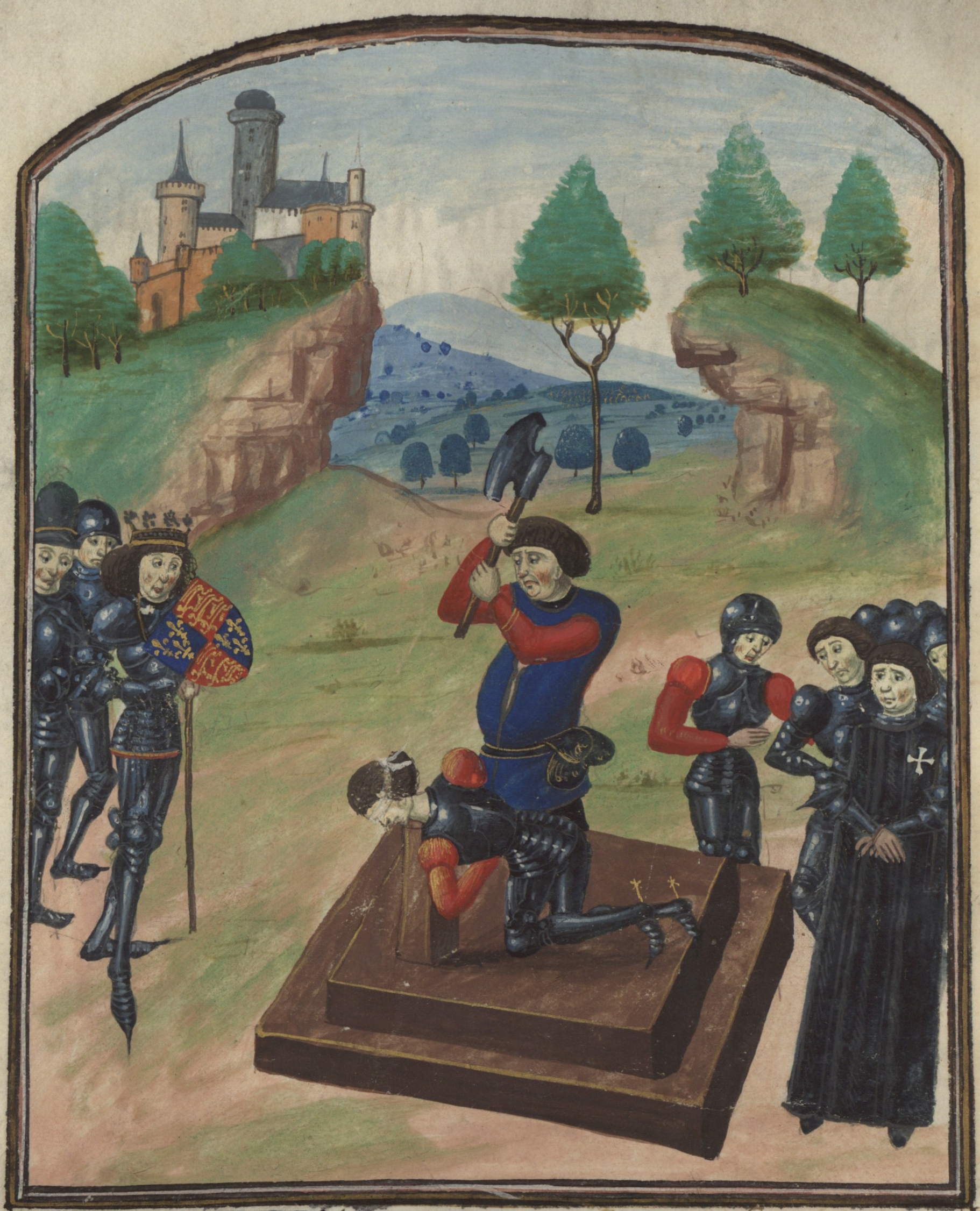- Browse Items
- Browse Collections
- Browse Exhibits
- ABOUT & INTRODUCTION
- KINGS
- QUEENS
- NOBILITY & OTHERS
- CONCLUSION
- CITATIONS
SIR WILLIAM STANLEY

Date of Birth: est. after 1435
Date of Death: February 16, 1495
Crime: Treason for supporting the pretender, Perkin Warbeck
Biography
William Stanley was the second son of Lord Thomas Stanley and Joan Goushill whose father was a knight. In 1465 he married Joan Beaumont, daughter of the first Viscount Beaumont and after her death he married Elizabeth Hopton who was the daughter of Sir Thomas Hopton and Eleanor Lucy. As granddaughter of Sir Walter Hopton she was also a descendant of King Henry II.
As a youth William participated with the Yorks in the first major battle of the War of the Roses (series of civil wars from 1460-1485) at Blore Heath. Like many families he had relatives on both sides of the dynastic wars between the Yorks and Lancasters. In 1461 when the first Yorkist became king, Edward IV, William was given the Office of Chamberlain of Chester. And after another War of the Roses battle at Hexham, which the Yorks won, William was given a castle and lordship at Skipton. Subsequently he also became steward of the Prince of Wales’ household. While it is said that Richard III tried to retain Stanley’s support, Stanley fought against him at the decisive Battle at Bosworth in 1485. Richard III was killed at this battle (some say by William Stanley’s men) and Lancastrian, Henry Tudor, came to the throne as King Henry VII.
Trial and Execution
King Henry VII reigned from 1485 until his death in April 1509. He restored stability to the English countryside, which allowed trade to flourish and the merchant class to grow. But, he also saddled the English with unpopular taxes. The tax revenue allowed him to expand the country’s navy and his treasury. Henry VII’s claim to the throne was thin at best so he had to focus his efforts on conspiracies and pretenders against the throne. One of the pretenders was Perkin Warbeck who claimed to be the Richard, Duke of York, the younger son of Edward IV. Henry apprehended him but not before he had gained support from Henry’s enemies, which included none other than William Stanley. Stanley was not alone; Warbeck had support from as far as the Holy Roman Emperor Maximilian, Edward IV’s sister, Margaret of Burgundy, Sir Simon Mountford, Sir Humphrey Savage and Sir Robert Clifford. Clifford received a pardon (some say he was working for the King all along). But William Stanley changed sides once too often and though he confessed, Parliament passed an Act of Attainder, which remanded all of Stanley’s land and possessions to the King. On February 6, 1495 he was “found guilty of treason by a quest of divers knights and worshipful gentlemen”1 and on the 16th he was beheaded on Tower Hill.
Historic Significance
Henry achieved the three major objectives he established when he took the throne; secure the dynasty, receive international respect and maintain a rich treasury.2 Unfortunately this came at a price, “Throughout his reign he was confronted by rebellions, by potential claimants to the throne, some of whom had a better title than himself…”3 Henry had initially secured the throne by fighting. It is reasonable to assume that he would use violence to protect his claim during his reign and for his heirs. When the men of Cornwall rose in revolt Henry left two thousand men dead on the fields and their leader, “Lord Audley was sent to his death on Tower Hill clad in a suit of paper armour.”4 The message to the remaining nobles was clear.
1. British Library Colton MS, Vitellius, A. xvi. 152-3 Fabyan, Chronicle, ed. Ellis, p 685.
2. Derek Wilson, The Tower: The Tumultuous History of the Tower of London from 1078 (New York: Charles Scribner’s Sons, 1979) 84.
3. Derek Wilson, The Tower, 84.
4. Derek Wilson, The Tower, 86.
